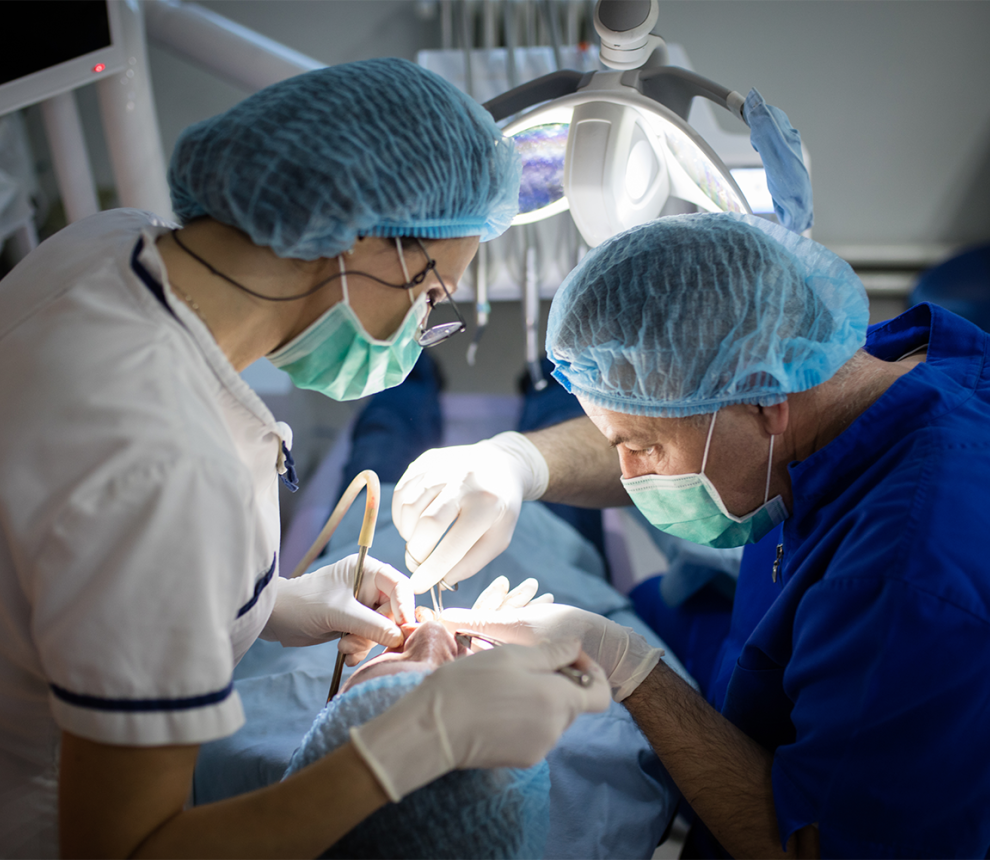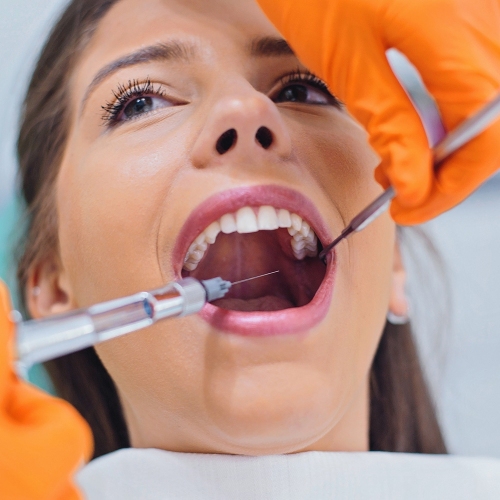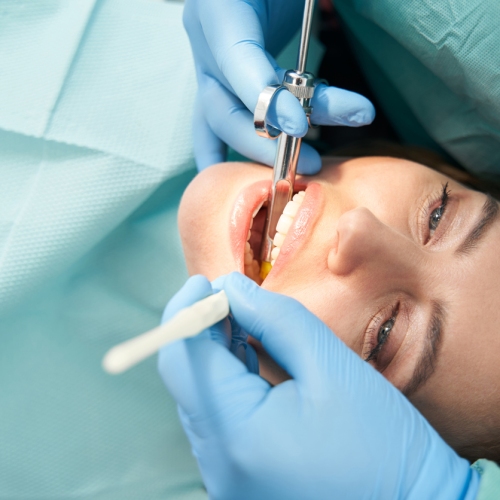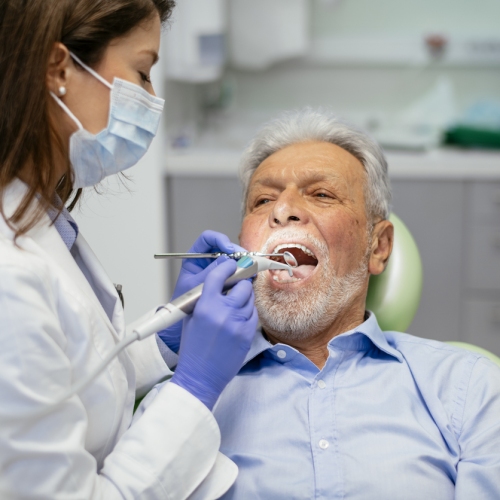What is Bupivacaine?
Bupivacaine is a local amide anaesthetic with a slow onset and long duration of action. It is a chemical analogue of mepivacaine, but has a longer duration of action compared to other local anaesthetics such as lidocaine, mepivacaine, or procaine. It is approximately four times more potent than lidocaine.
Like other amide anaesthetics, bupivacaine works on sodium channels and prevents an influx of sodium ions through the nerve membrane. Epinephrine (adrenaline) is added to block absorption, extending the duration of action.
Due to its extended duration of action, bupivacaine is ideal for use in lengthy procedures such as endodontic, periodontal, and surgical procedures[2]. For example, it is often used for postoperative pain control after removing the third molars and chronic oral pain[2,3].
The smallest amount needed to achieve effective anaesthesia should be used, accounting for a patient’s age, weight, and overall health. Bupivacaine should not be used in people with certain underlying health conditions, such as cardiac complications, clotting defects, and degenerative nerve disease. Pregnant women and nursing mothers should only be given bupivacaine if the benefits outweigh the risks, and if dental surgery is necessary. For a full list of contraindications, check the product leaflet.
Why use Bupivacaine?
When choosing a local anaesthetic for a patient, dentists take many factors into consideration, including patient characteristics (age, health, pregnancy, etc.) and the procedure they are performing. There are many options, but it is imperative to choose an anaesthetic where the benefits outweigh the risks to the patient.
When mixed with epinephrine at a 1:200,000 ratio, bupivacaine begins working within 15 minutes and can block nerve pain for between 2 to 8 hours[2]. In some cases, the effects may last more than 12 hours. With this, bupivacaine is preferred to other local amide anaesthetics such as lidocaine, mepivacaine, and articaine[2].
Studies also show that bupivacaine is superior to other local anaesthetics in preventing postoperative pain from dental procedures. In one, bupivacaine significantly decreased postoperative pain compared to lidocaine after an endodontic procedure[5]. A meta-analysis of several studies also found similar results[6].
A randomised controlled trial on the anaesthetic strength of bupivacaine vs. articaine for removing the lower third molars found that bupivacaine was better at reducing pain during the postoperative period in which pain is usually most significant[6].
Overall, bupivacaine is a safe and effective local anaesthetic that is used in dental procedures and surgeries. Its long duration of action and potency make it an excellent anaesthetic for lengthy procedures and for managing chronic pain.
References
- Singh, P. An emphasis on the wide usage and important role of local anesthesia in dentistry: A strategic review. Dent Res J (Isfahan). 2012, 9(2):127-132. Accessed from: https://www.ncbi.nlm.nih.gov/pmc/articles/PMC3353686/
- Pandey, C., Speedie, A., Jaiswal, R., Lanjewar, S., Dondulkar, Y. (2019). Role of Bupivacaine in Dentistry. Int J Oral Health Med Res. 6(2), 53-55.
- St George, G., Morgan, A., Meechan, J., Moles, D.R., Needleman, I., et al. (2018). Injectable local anaesthetic agents for dental anaesthesia. Cochrane Database Syst Rev. 7(7), CD006487. Accessed from: https://pubmed.ncbi.nlm.nih.gov/29990391/
- Summary of Product Characteristics of Inibsacain 5 mg/ml + 0.005 mg/ml.
- Moradi, S., Naghavi, N. Comparison of Bupivacaine and Lidocaine Use for Postoperative Pain Control in Endodontics. Iran Endod J. 2010, 5(1): 31-35. Accessed from: https://www.ncbi.nlm.nih.gov/pmc/articles/PMC4000677/
- Su, N., Wang, H., Zhang, S., Liao, S., Yang, S., Huang, Y. Efficacy and safety of bupivacaine versus lidocaine in dental treatments: a meta-analysis of randomised controlled trials. Int Dent J. 2014, 64(1): 34-45.
- Sancho-Puchades, M., Vilchez-Perez, M., Valmaseda-Castellon, E., Paredes-Garcia, J., Berini-Aytes, L., Gay-Escoda, C. Bupivacaine 0.5% versus articaine 4% for the removal of lower third molars. A crossover randomized controlled trial. Med Oral Patol Oral Cir Bucal. 2012, 17(3):e462-8. Retrieved from: https://pubmed.ncbi.nlm.nih.gov/22143739/




































